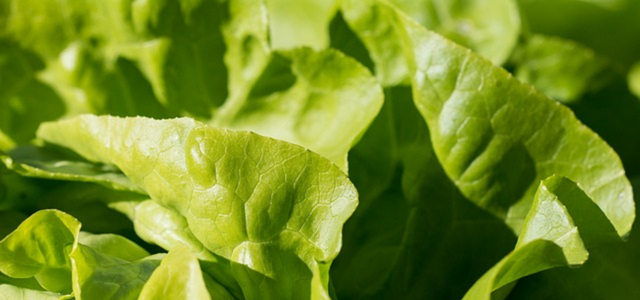In agriculture, IP attorneys typically counsel entrepreneurs and plant breeders to protect plant varieties through plant patents, utility patents, and/or plant variety protection certificates. However, Little Leaf Farms has recently filed an application with the USPTO to register the biological morphology of its Baby Crispy Green Leaf lettuce leaves as a trademark.[1] Biological morphology is essentially the structural features of a living organism. The trademark application refers to a three-dimensional configuration of a lettuce leaf having a curled and curved spine leading into ruffled edges. Registered trademarks for three-dimensional product shapes are not new. A notable example of a registered three-dimensional trademark for food products includes the shape of a Hershey’s Kiss.
Three-dimensional trademarks, also known as trade dress, are limited by the functionality doctrine, which “prohibits registration of functional product features.” Functionality comes in two forms: utilitarian and aesthetic. Utilitarian functionality exists if the feature is essential to the use or purpose of the product or if it affects the product’s cost or quality.[2] Congress relegated the protection of utilitarian features to the patent law. Aesthetic functionality arises when the look or aesthetic of a feature provides a non-reputation related competitive advantage.
Aesthetic functionality applies in situations where the design does not provide a utilitarian advantage in terms of product performance but provides a competitive advantage intrinsically tied to the design’s aesthetic.[3] The traditional test for aesthetic functionality includes the same elements considered under the Inwood/TrafFix test for utilitarian functionality in addition to considerations of whether the design provides a non-reputation related competitive advantage, as illustrated by Deere & Co. v. Farmhand, Inc.[4] There, Deere had consistently used a particular shade of green to identify its tractors. When Farmhand introduced front-end loaders designed to operate with the Deere tractor, it painted its front-end loaders a shade of green identical to Deere’s shade of green. Deere objected on trademark grounds, The court “conclude[d] that the doctrine of aesthetic functionality . . . appl[ied] to the dispute” and “that protection of John Deere green . . . would hinder Farmhand in competition.” By contrast, in In re Owens-Corning Fiberglass Corp.[5], the Federal Circuit found “the color ‘pink’ has no utilitarian purpose, does not deprive competitors of any reasonable right or competitive need,” and is not considered functional on any other grounds. The aesthetic function involved in Deere & Co. was the desire to create uniformity through creating color-coordinated farm equipment, whereas, in Owens-Corning, that same aesthetic function was not a concern because there was no aesthetic need that the color pink satisfied. The Second Circuit in, Christian Louboutin v. Yves Saint Laurent America[6], associated aesthetic functionality to a product shape, stating “when the aesthetic design of a product is itself the mark for which protection is sought, we may also deem the mark functional if giving the markholder the right to use it exclusively ‘would put competitors at a significant non-reputation-related disadvantage’”.[7]
It is clear that the functionality doctrines, utilitarian and aesthetic, are intended to encourage legitimate competition by maintaining a proper balance between trademark law[,] patent law,”[8] and competitive need.
Do the Baby Crispy Green Leaf lettuce leaves have a purpose? Does the morphology affect the cost or quality of the product? Does protecting the leaf’s morphology as a trademark put competitors at a non-reputation disadvantage?
It depends…
Perhaps arguments can be made that the texture and visual appeal, improved mouthfeel, nutritional content, and versatility in culinary applications will be considered essential to the use, purpose, or essential aesthetic quality of the leafy legends.
Furthermore, an argument may be made that recognition of trademark rights, such as the biological morphology of the Baby Crispy Green Leaf lettuce, would put competitors at a significant non-reputation-related disadvantage by precluding entrepreneurs and plant breeders from continuing their pursuit in producing healthy leafy legends that are appealing and affordable to the consumer.
Alternatively, is the biological morphology of a curled lettuce leaf really that much different than the shape of a Hershey’s Kiss?
Lettuce wait and see, for time will tell if this salad’s curl stands the test of thyme.
Written by Bree Vculek, The George Washington University Law School ‘23 and Lolita Darden, Visiting Associate Clinical Professor; Director of Intellectual Property and Technology Law Clinic, The George Washington University Law School. Associated with the Jacob Burns Community Intellectual Property and Technology Law Clinic.



[1] Serial number 97912382.
[2] See Inwood Labs., Inc. v. Ives Labs., Inc., 456 U.S. 844, 850, n.10, 214 USPQ 1, 4, n.10 (1982); see also TrafFix Devices, Inc. v. Marketing Displays, Inc., 532 US 23, 32 (SCt. 2001) (citing Qualitex, 514 U. S., at 165 (quoting Inwood Laboratories, Inc. v. Ives Laboratories, Inc., 456 U. S. 844, 850, n. 10 (1982).
[3] See Loletta Darden, Overlapping and Sequential Copyright, Patent, and Trademark Protections: A Case for Overruling the Per Se Bar, 44(2) The Columbia Journal of Law & The Arts at p. 21, available online at https://doi.org/10.52214/jla.v44i2.7822.
[4] 560 F. Supp. 85, 98 (S.D.Iowa 1982)
[5] 774 F.2d 1116, 1122 (Fed. Cir. 1985)
[6] 696 F. 3d 206 (2nd Cir. 2012)
[7] Id. at 220 (citing Qualitex, 514 U.S. at 165, 115 S.Ct. 1300).
[8] Qualitex Co. v. Jacobson Prods. Co., 514 U.S. 159, 164-165, 34 USPQ2d 1161, 1163 (1995).










